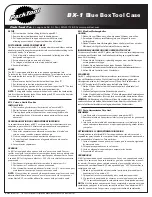
7
35021159-01 2016.06
About Formatting
Formatting is the process of preparing a storage device such as a hard drive for use on your computer. To format a
drive, refer to the procedures below.
Format Types
There are several different format types, each compatible with different operating systems.
NTFS
NTFS formatting is compatible with Windows. Mac OS can read this format but not write to it. It can handle files
larger than 4 GB.
FAT32
FAT32 works with most modern operating systems including Windows and Mac OS. It doesn't support the use of
files larger than 4 GB.
Mac OS Extended
This is a format for the Mac OS only. It supports use of files that are 4 GB or larger in size. Windows doesn't
support this format.
NTFS
FAT32
Mac OS Extended
Windows
Both reading and writing
are supported
Both reading and writing
are supported (cannot
handle files larger than 4
GB)
Not supported (Hard drive
is not recognized)
Mac OS X
Only reading is supported
Writing is not supported
Both reading and writing
are supported (cannot
handle files larger than 4
GB)
Both reading and writing
are supported
Notes
Never unplug the cable, reset, or turn off the computer during the formatting process.
This could result in damage to the drive or other problems. Proper operation cannot be guaranteed if the format
process was interrupted.
Formatting will erase all data on the hard drive. Before formatting, back up any data.
The user is responsible for any data lost due to formatting of the hard drive.
Don't format the wrong drive! Check the drive letter and partition name carefully. If you format the wrong drive, all
data on it will be lost.









































